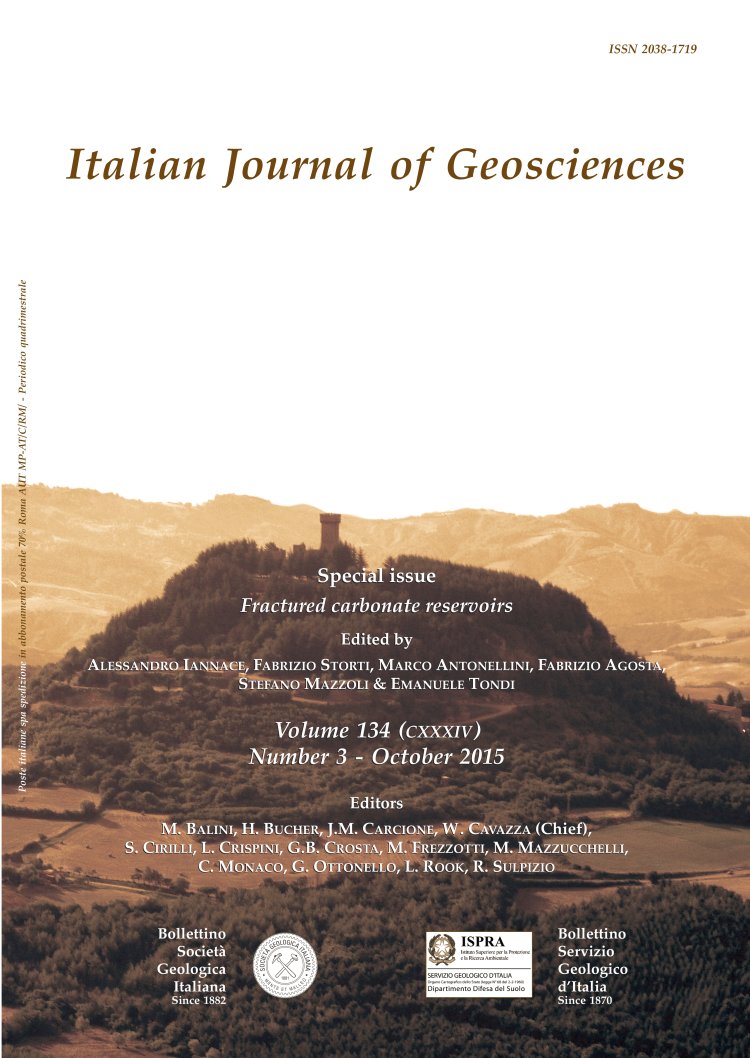
Structural architecture and Discrete Fracture Network modelling of layered fractured carbonates (Altamura Fm., Italy)
Elisa Panza (1), (3), Fabrizio Agosta (1), (3), Miller Zambrano (2), (3), Emanuele Tondi (2), (3), Giacomo Prosser (1), Maurizio Giorgioni (4) & Jean Michel Janiseck (5)
(1) Department of Science, University of Basilicata, Italy. Corresponding author e-mail: elisa.panza@unibas.it
(2) School of Science and Technology, University of Camerino, Italy.
(3) Reservoir Characterization Project (www.rechproject.com).
(4) Shell Italia E&P, Rome, Italy.
(5) Total E&P Italia, Rome, Italy.
DOI: https://doi.org/10.3301/IJG.2014.28
Volume: 134 (2015) f.3
Pages: 409-422
Abstract
This work focuses on the spacing and height distributions of bed-perpendicular fracture sets present within a carbonate multilayer, and on their effect on the volumetric (P32 and fracture porosity) and hydraulic (correspondent permeability) properties of the rock mass computed after DFN modelling. Results of integrated field and laboratory analyses are consistent with an uneven spacing distribution of Strata-Bound (SB) fractures. The oldest SB fractures formed within individual limestone beds bounded by bed interfaces, which likely acted as mechanical interfaces. Differently, the youngest SB fractures formed within smaller rock volumes bounded by the pre-existing fractures. Non Strata-Bound (NSB) fractures consist on sheared bed-perpendicular fractures, originally compartmentalized within individual beds, which now form incipient strike-slip faults.
DFN modelling of representative rock volumes show that both volumetric and hydraulic properties are strongly affected by the two main sets of NSB fractures, which form a conjugate system of faults producing the principal structural anisotropy in the fractured carbonate multi-layer.
DFN modelling of representative rock volumes show that both volumetric and hydraulic properties are strongly affected by the two main sets of NSB fractures, which form a conjugate system of faults producing the principal structural anisotropy in the fractured carbonate multi-layer.
Keywords
fractured carbonates, fracture porosity, hydraulic properties, background deformation, Altamura Formation.
Get Full Text